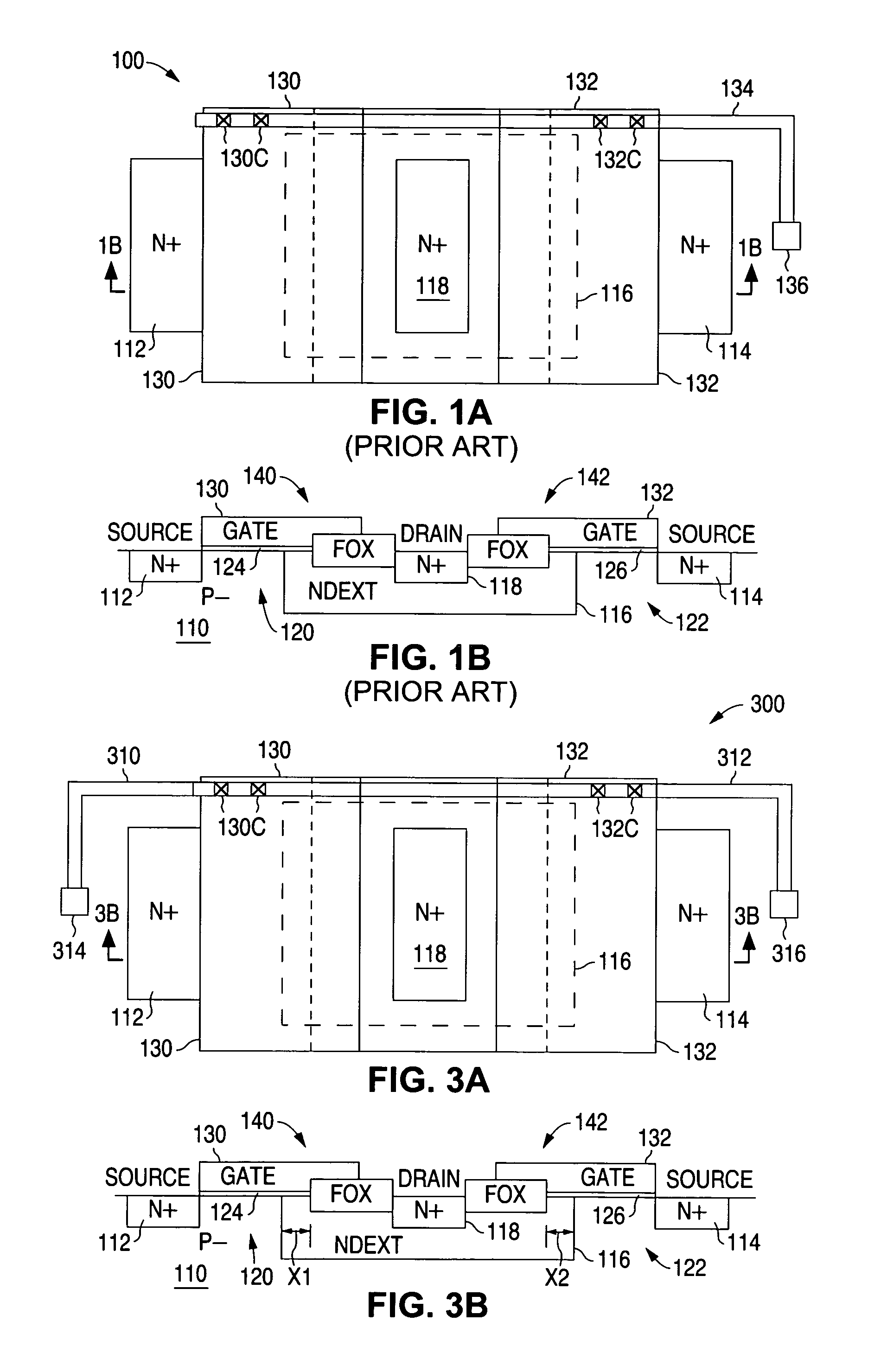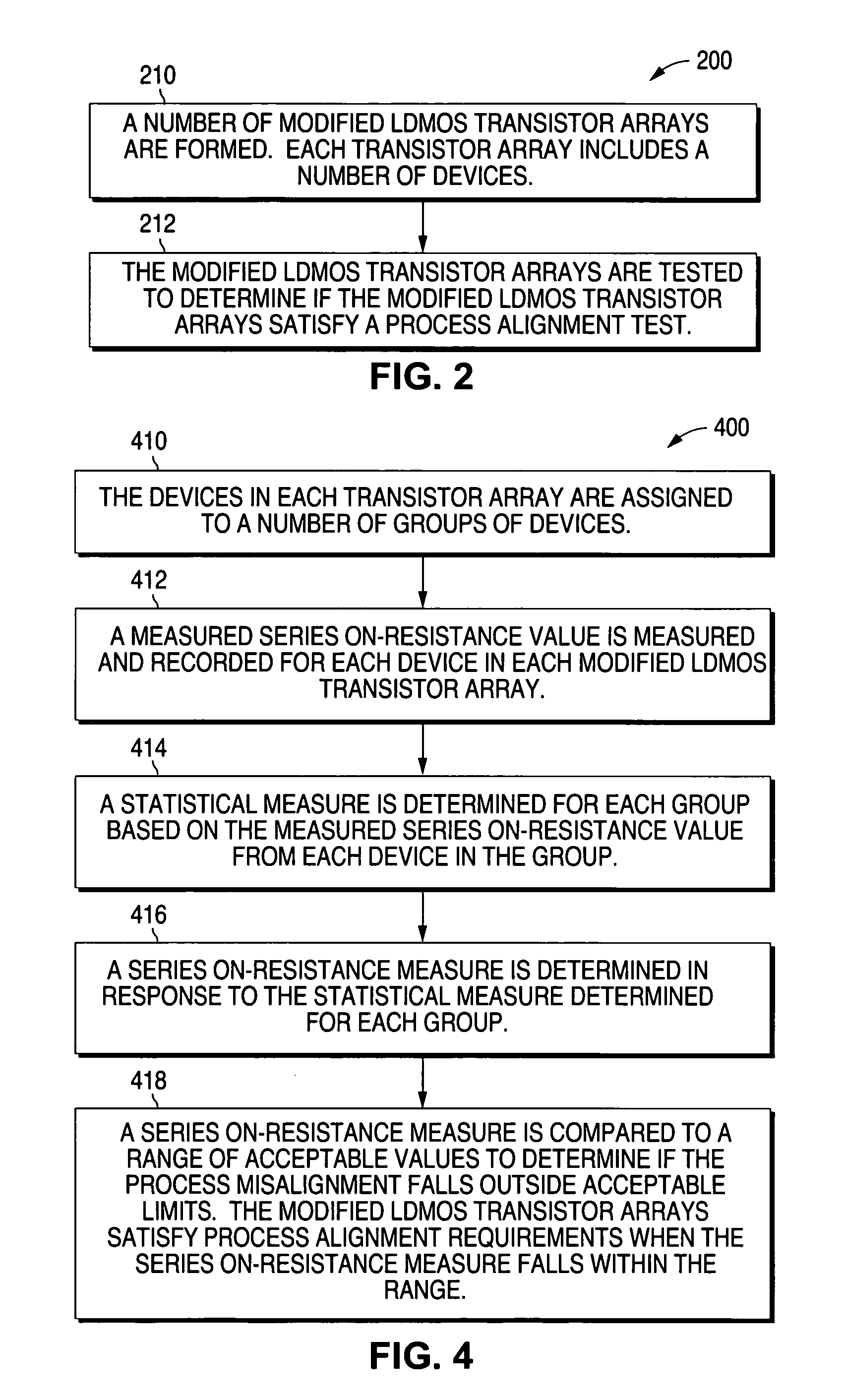Method of monitoring process misalignment to reduce asymmetric device operation and improve the electrical and hot carrier performance of LDMOS transistor arrays
a technology of ldmos transistor array and process misalignment, which is applied in the direction of semiconductor/solid-state device testing/measurement, semiconductor/solid-state device details, instruments, etc., can solve the problems of series on-resistance and substrate current degrade (increase), hot carriers, and a number of device parameters
- Summary
- Abstract
- Description
- Claims
- Application Information
AI Technical Summary
Benefits of technology
Problems solved by technology
Method used
Image
Examples
Embodiment Construction
[0027]FIG. 2 shows a flow chart that illustrates an example of a method 200 of testing lateral DMOS (LDMOS) transistor arrays in accordance with the present invention. As described in greater detail below, the present invention measures the substrate currents, series on-resistances, breakdown voltages and hot carrier performance of the devices in a LDMOS transistor array.
[0028]Device misalignment biases result in undesired asymmetric electrical operation and reliability between the devices in the LDMOS array. The present invention measures these asymmetries and utilizes the electrical measurements to quantify and provide information on effective process misalignment so that manufacturing process biases can be minimized to acceptable values. Minimizing these alignment biases improves electrical performance (especially breakdown voltage) and device reliability.
[0029]As shown in FIG. 2, method 200 begins at 210 where a number of modified LDMOS transistor arrays are formed. Each LDMOS t...
PUM
 Login to View More
Login to View More Abstract
Description
Claims
Application Information
 Login to View More
Login to View More - R&D
- Intellectual Property
- Life Sciences
- Materials
- Tech Scout
- Unparalleled Data Quality
- Higher Quality Content
- 60% Fewer Hallucinations
Browse by: Latest US Patents, China's latest patents, Technical Efficacy Thesaurus, Application Domain, Technology Topic, Popular Technical Reports.
© 2025 PatSnap. All rights reserved.Legal|Privacy policy|Modern Slavery Act Transparency Statement|Sitemap|About US| Contact US: help@patsnap.com



